Annihilation - 1
At 7:31 in the morning of August 6, all alerts were lifted and the regiments in Moto-machi were starting their day’s duties around 8. Milliseconds after the A-bomb exploded, many people felt the flash as they were buried beneath the buildings collapsing from the blast or were blown far off their feet. The facilities around the Chugoku Military District Headquarters, including barracks for infantry, artillery, and transport regiments, as well as the Army Hospital, crumbled and caught fire, leaving Moto-machi in a state of ruin.
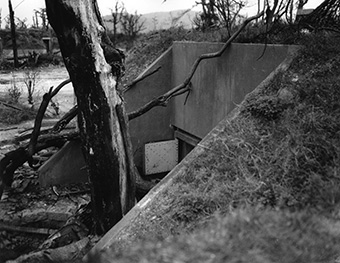
Entrance to the Air Defense Room which initially reported Hiroshima's destruction
Yoshie Oka, a third-year student from the Hijiyama Girls High School (then, 14) was exposed to the bomb inside the Chugoku Military District Headquarters Air Defense Room while at work. Yoshie relayed the terrible fate of Hiroshima to military personnel in Fukuyama using a military phone that had managed to escape damage. This is considered the first report of the atomic bombing of Hiroshima.
Taken by US Army
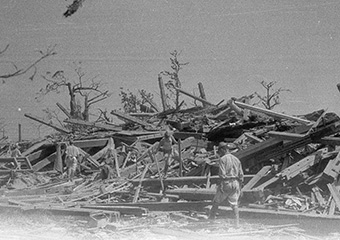
The destroyed Imperial Headquarters building
The blast from the A-bomb completely leveled the wooden Imperial Headquarters building.
August 9-12, 1945 Taken by Hajime Miyatake
Courtesy of Asahi Shimbun
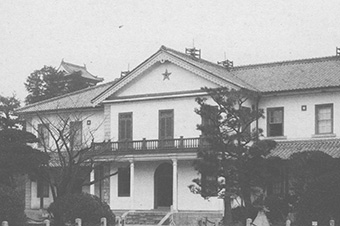
The Imperial Headquarters site before the bombing
The star can be seen hanging on the upper part of the facade.
Courtesy of Hiroshima City Museum of History and Traditional Crafts

Army trousers
Sanji Fukunaga (then, 43) experienced the bombing from the Chugoku Military District Infantry First Reserve barracks (1,000m from the hypocenter). Days later, he returned to his family still wearing these trousers, but his face was so distended that they were barely able to recognize him.
Donated by Sanji Fukunaga

Metal base from the star on the Imperial Headquarters building
This metal base held a star that decorated the facade of the Imperial Headquarters Building.
Mitsuru Kobo had been a soldier in the Transport Corps during the Taisho Period, so he was very familiar with the Imperial Headquarters building. In the autumn after the bombing, he discovered the base at the ruined Imperial Headquarters and took it home. The star was too heavy so he was unable to carry it.
Donated by Mitsuru Kobo
Hiroshima Second Army Hospital
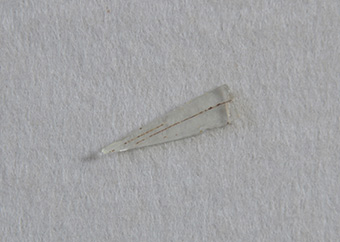
Glass fragment removed 53 years after the bombing
Kenichi Endo (then, 25) had been admitted to Hiroshima Second Army Hospital (1,050m from the hypocenter) for treatment of his typhoid fever when he experienced the bombing.
The moment he felt the intense flash from behind the glass, he covered his face with his hands. In the next instant, he and his bed were blown back by the fierce blast. He had burns on the left side of his head and the back of both hands, which were shielding his face, as well as a deep wound to his left upper thigh area and dozens of cuts across his back and buttocks from flying glass.
This piece of glass was removed from Kenichi’s body 53 years later.
Donated by Haruko Endo
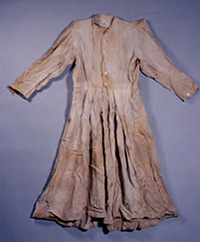
Nurse’s uniform
Matsue Oi (then, 26) was a nurse at Hiroshima Second Army Hospital (1,050m from the hypocenter). Wearing this uniform during her overnight shift on August 5, she was still at work when the A-bomb was dropped and became trapped under the rubble of the building. She made a frantic escape while flames were ravaging the surrounding buildings, but she had incurred a severe contusion.
Donated by Matsue Oi
Hiroshima Army Cadet School

Hiroshima Army Cadet School
Only a burnt wall remained. The building visible to the right is the Hiroshima Communications Bureau.
Late August 1945 Taken by Yoshio Tanihara

Leather gaiters
Minoru Yagi was at work in the accounting department at Chugoku Military District Headquarters inside Hiroshima Army Cadet School (1,200m from the hypocenter) when he experienced the bombing. He had received a blow to the head, the inside of his mouth was coming apart, and regardless of the gaiters, he had a laceration on his left leg.
Donated by Minoru Yagi
